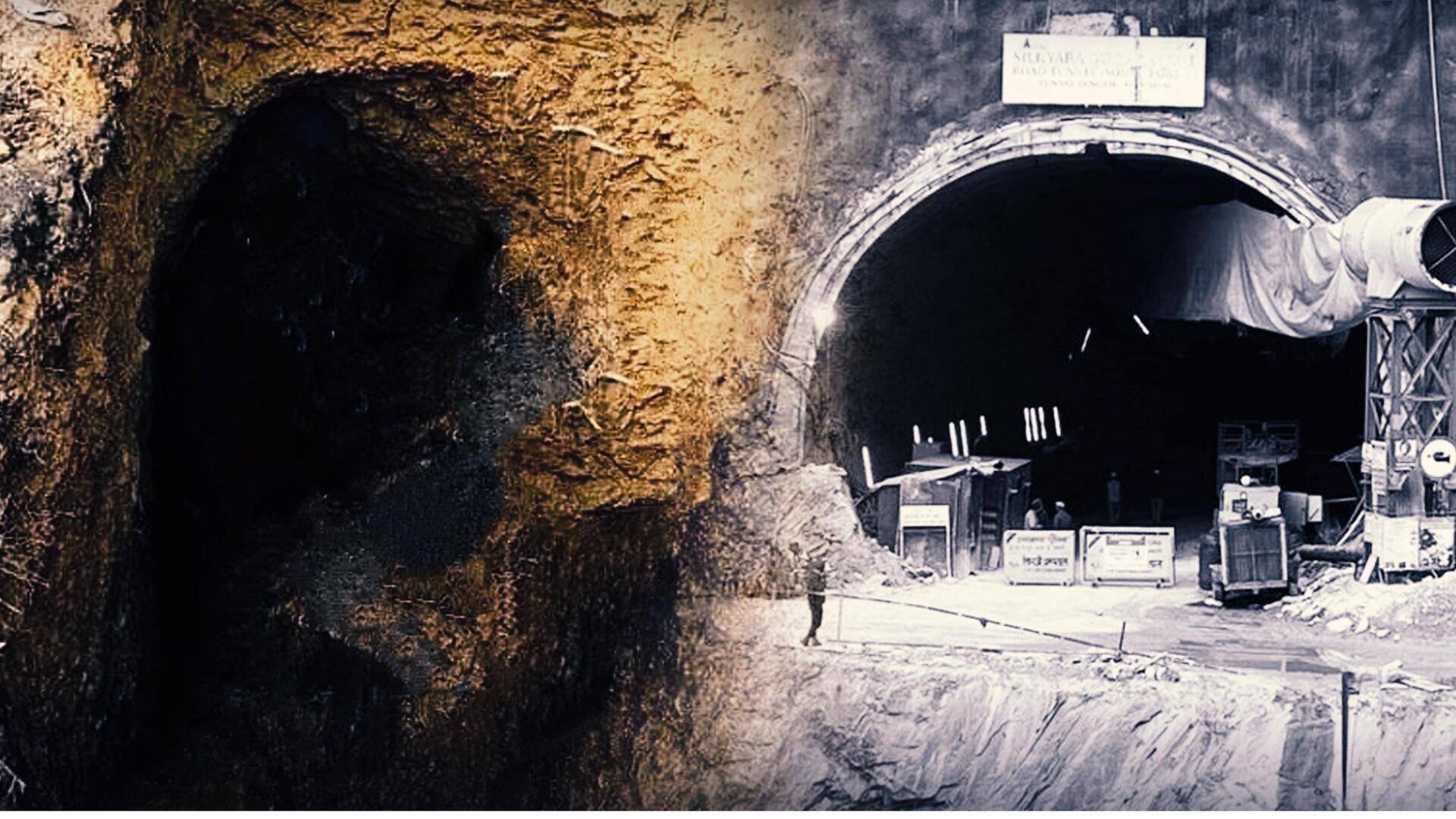
Uttarkashi tunnel collapse: Everything to know about rat-hole mining
What's the story
Authorities in Uttarkashi, Uttarakhand, have resorted to the outlawed practice of rat-hole mining in their desperate attempt to save 41 workers trapped inside the collapsed Silkyara tunnel for 17 days. Twelve rat-hole mining specialists were deployed for manual horizontal drilling through the debris on Monday. By Tuesday afternoon, the rubble was finally cleared, and pipes to pull out the workers were also laid. Besides, vertical drilling was also being carried out simultaneously to reach the workers from above the tunnel.
Context
Why does this story matter?
On November 12, a portion of the 4.5km under-construction tunnel between Silkyara and Dandalgaon, part of the Char Dham all-weather road project, trapping 41 workers. After multiple rescue attempts with sophisticated augur machines failed, authorities resorted to rat-hole miners on Monday. Per NDTV, those deployed for the rescue operation are not rat-hole miners but are experts in the technique, which is widely employed in coal mining in Meghalaya.
Details
What exactly is rat-hole mining
Rat-hole mining is a method where narrow pits, only as wide as four feet, are dug into the ground to extract coal from horizontal seams. Broadly, there are two types of this technique: side-cutting and box-cutting. The side-cutting procedure typically involves narrow tunnels excavated on hill slopes. Workers go inside these tunnels until they find a coal seam. Meanwhile, in the box-cutting method, miners first dig a vertical rectangular pit and drill horizontally as needed to reach the coal seam.
What Next?
Rat-hole mining outlawed in 2014
Notably, rat-hole mining was banned in 2014 by the National Green Tribunal (NGT) for being unscientific. However, it continues unregulated across India, mostly in several northeastern states. Miners often work without proper ventilation, safety equipment, or structural support, leading to accidents, injuries, and even fatalities. Despite multiple accidents and tragedies, the Manipur government had previously challenged the NGT ban, contending there was no other feasible mining option available for the state.
North East India
What we know about rat-hole mining in Northeast
This mining technique is rampant in Northeast India, especially in Meghalaya, where children—small and agile—are often illegally deployed to extract coal from narrow pits. However, there have been several unfortunate incidents where rat-hole miners even lost their lives. In 2018, 15 such miners got trapped inside a flooded mine. While the rescue operation continued for two months, only two bodies could be retrieved. Similarly, in 2021, five miners were trapped in a flooded mine; only three bodies could be retrieved.
Insights
Experts working in shifts to clear debris
Rajput Rai—one of the rat-hole mining experts working inside an 800mm pipe to remove debris—earlier told PTI that they were working in shifts. Detailing the process, he added that one miner is assigned to drill, while a second collects the rubble and a third places it inside a trolley that is pulled out. Meanwhile, another worker revealed they were using specialist tools and carrying a blower for oxygen/air circulation. Notably, the miners are also skilled in slicing through metal barriers.